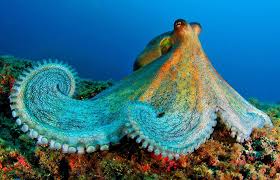Discover the Marvels of Hawaii Sea Life Park

Exploring the Wonders of Hawaii Sea Life Park
Welcome to Hawaii Sea Life Park, a marine mammal park and aquarium located on the island of Oahu. This iconic park offers visitors a unique opportunity to immerse themselves in the fascinating world of marine life found in the waters surrounding Hawaii.
At Hawaii Sea Life Park, visitors can witness an incredible array of sea creatures up close, from playful dolphins and majestic sea lions to colorful tropical fish and graceful sea turtles. The park’s interactive exhibits and educational programs provide a fun and informative experience for visitors of all ages.
One of the highlights of Hawaii Sea Life Park is the chance to participate in interactive experiences with marine animals. Visitors can swim with dolphins, interact with sea lions, and even feed sharks under the guidance of experienced trainers. These up-close encounters offer a once-in-a-lifetime opportunity to learn about these amazing creatures in their natural habitat.
In addition to its animal encounters, Hawaii Sea Life Park also features entertaining shows and presentations that showcase the intelligence and agility of its resident marine mammals. From dolphin performances to sea lion demonstrations, these shows are sure to delight audiences of all ages.
Whether you’re a nature enthusiast, animal lover, or simply looking for a fun day out with your family, Hawaii Sea Life Park has something for everyone. Come visit this one-of-a-kind attraction and discover the wonders of the ocean right here in beautiful Hawaii!
Top 5 FAQs About Visiting Sea Life Park Hawaii
- Can you swim at Sea Life Park?
- What can you do at Sea Life Park Hawaii?
- How long do people spend at Sea Life Park?
- How long does it take to see Sea Life Park Hawaii?
- Is parking free at Sea Life Park Hawaii?
Can you swim at Sea Life Park?
Yes, visitors have the opportunity to swim at Sea Life Park through their interactive programs. Sea Life Park offers various swim-with-dolphin experiences that allow guests to get up close and personal with these intelligent marine mammals. Additionally, visitors can also participate in other interactive encounters with sea lions and rays. These unique experiences provide a memorable opportunity for guests to learn about and connect with the fascinating sea life at Sea Life Park while enjoying a fun and educational adventure in the water.
What can you do at Sea Life Park Hawaii?
At Sea Life Park Hawaii, visitors can enjoy a wide range of exciting activities and experiences that showcase the beauty and diversity of marine life in Hawaii. From swimming with dolphins and interacting with sea lions to feeding sharks and watching captivating animal shows, there is something for everyone to enjoy at the park. Guests can also explore interactive exhibits, learn about conservation efforts, and gain a deeper appreciation for the incredible creatures that call the ocean their home. With its engaging programs and educational opportunities, Sea Life Park Hawaii offers a memorable and enriching experience for visitors of all ages.
How long do people spend at Sea Life Park?
Visitors to Hawaii Sea Life Park typically spend anywhere from 3 to 5 hours exploring the park’s various attractions and exhibits. The duration of a visit can vary depending on individual interests and preferences, as well as the specific activities or shows that visitors choose to participate in. Some guests may choose to spend a full day at the park to fully immerse themselves in all that it has to offer, while others may opt for a shorter visit to experience the highlights. Whether you’re looking for a quick excursion or a full-day adventure, Hawaii Sea Life Park offers something for everyone to enjoy during their visit.
How long does it take to see Sea Life Park Hawaii?
The time it takes to fully explore Sea Life Park Hawaii can vary depending on individual preferences and interests. On average, visitors typically spend around 2 to 3 hours at the park to experience the main attractions, interactive exhibits, animal encounters, and shows. However, those looking to engage in more in-depth experiences such as swimming with dolphins or participating in additional activities may choose to extend their visit. Ultimately, the duration of your stay at Sea Life Park Hawaii is flexible and can be tailored to suit your schedule and desired level of engagement with the park’s offerings.
Is parking free at Sea Life Park Hawaii?
Parking at Sea Life Park Hawaii is not free. Visitors to the park are required to pay a parking fee, which helps support the maintenance and operation of the park. The parking fee is a standard practice at many attractions and ensures that visitors have convenient access to the park facilities. Guests can rest assured that there are designated parking areas available for their convenience when they visit Sea Life Park Hawaii.

